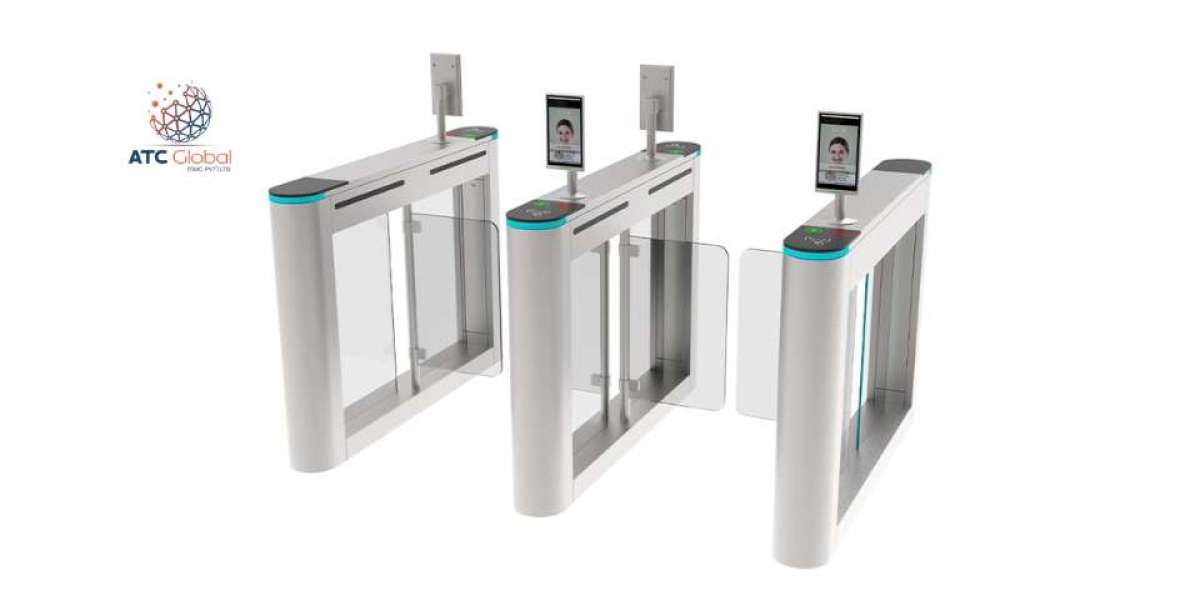Biometric turnstiles are rapidly transforming physical access control systems. These innovative security solutions integrate biometric technology with traditional turnstiles, offering a more secure and convenient method of managing pedestrian access. This article explores the concept of biometric turnstiles, delving into their functionalities, benefits, and various applications.
Unveiling Biometric Turnstiles: Technology and Functionality
Biometric turnstiles combine the physical barrier of a turnstile with advanced biometric identification technology. These systems utilize unique biological characteristics of individuals, such as fingerprints, facial features, iris scans, or even palm prints, for identification and access control.
Here’s a breakdown of the core components of a biometric turnstile:
- Turnstile Mechanism: This is the physical barrier that regulates pedestrian movement. Common turnstile designs include tripod turnstiles, waist-high turnstiles, and full-height turnstiles.
- Biometric Reader: This device captures and analyzes the user’s unique biological data. The choice of biometric reader depends on the technology employed (fingerprint scanner, facial recognition camera, etc.)
- Control Unit: This is the brain of the system, processing the information received from the biometric reader and granting or denying access based on pre-programmed authorization lists.
The access control process typically involves the following steps:
- User Approaches Turnstile: An individual seeking access approaches the biometric turnstile.
- Biometric Identification: The user presents their chosen biometric identifier (finger, face, etc.) to the biometric reader.
- Data Processing: The control unit receives the captured biometric data and compares it against a pre-enrolled database of authorized individuals.
- Access Granted/Denied: If the biometric data matches an authorized user, the control unit unlocks the turnstile mechanism, allowing passage. Conversely, if there’s no match or the user lacks access permission, the turnstile remains locked.
Advantages of Biometric Turnstiles
Biometric turnstiles offer numerous advantages over traditional access control methods like key cards or PIN codes:
- Enhanced Security: Biometric identifiers are unique to each individual, making them exceptionally difficult to forge or share. This significantly reduces the risk of unauthorized access compared to traditional methods.
- Convenience: Biometric identification typically requires minimal user interaction, offering a touchless and seamless access experience.
- Improved Speed: Biometric readers can verify identities very quickly, facilitating faster flow of authorized personnel through access points.
- Reduced Operational Costs: By eliminating the need for physical access cards or tokens, biometric turnstiles can minimize the costs associated with issuance and replacement.
- Real-Time Monitoring: Many biometric turnstiles provide real-time data on access attempts, allowing for better monitoring and auditing of personnel movement.
- Increased Accountability: Biometric identification creates a clear link between individuals and their access attempts, fostering greater accountability.
Applications of Biometric Turnstiles
Biometric turnstiles offer a versatile solution for various access control applications, including:
- Corporate Buildings: Biometric turnstiles can secure restricted areas within office buildings, controlling employee access to sensitive departments or server rooms.
- Government Facilities: High-security government buildings can benefit from biometric turnstiles to ensure authorized personnel access and enhance overall security measures.
- Manufacturing Facilities: Biometric turnstiles can control access to production floors or hazardous areas within manufacturing plants.
- Educational Institutions: Universities and schools can utilize biometric turnstiles to secure dormitories, laboratories, or restricted areas.
- Data Centers: Biometric turnstiles offer an extra layer of security for data centers, safeguarding critical IT infrastructure.
- Airports and Border Control: Biometric turnstiles can expedite passenger screening and border control processes while maintaining high levels of security.
Considerations for Implementing Biometric Turnstiles
While biometric turnstiles offer significant advantages, there are some considerations before implementation:
- Cost: The initial investment in biometric turnstiles can be higher compared to traditional access control systems.
- Data Privacy: Implementing a biometric system raises concerns about data privacy and user consent for information collection.
- Integration: Biometric turnstiles may require integration with existing access control systems, potentially involving additional costs and technical expertise.
- Maintenance: Biometric readers and turnstile mechanisms require regular maintenance to ensure optimal functionality.
Conclusion
In conclusion, biometric turnstiles represent a significant advancement in physical access control. By leveraging the power of biometrics, these innovative systems offer enhanced security, convenience, and improved access management for various applications.








